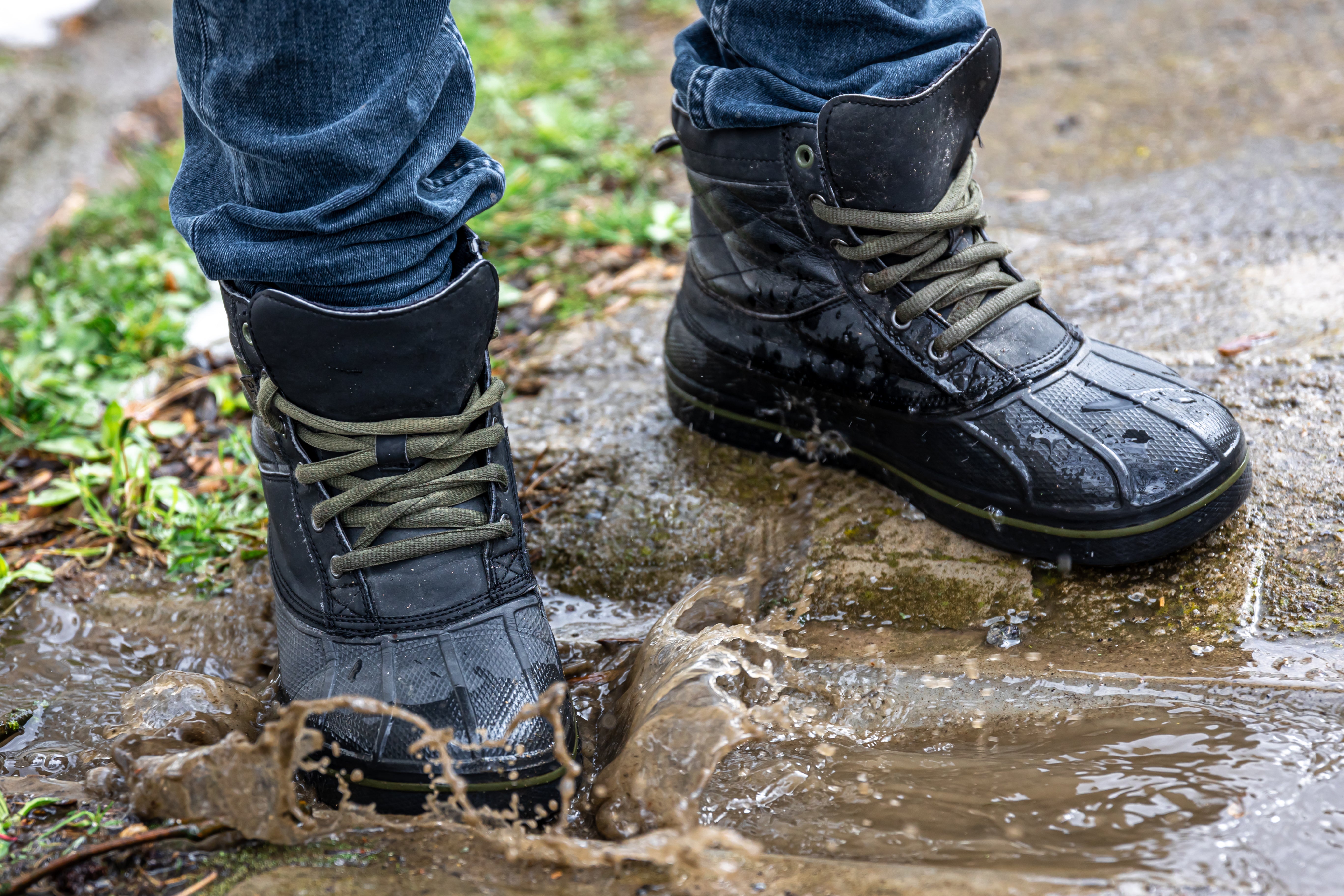Introduction
Choosing the right safety toe footwear is more than just a comfort decision—it’s a matter of compliance, injury prevention, and long-term performance on the job site. For construction workers, boots are one of the most important pieces of personal protective equipment (PPE). The wrong choice can leave feet vulnerable to impact, punctures, electrical hazards, and fatigue.
This guide covers the key differences between steel toe and composite toe boots, OSHA’s footwear rules, ASTM safety standards, weight considerations, slip resistance, puncture protection, and more. Whether you’re shopping for your next pair or helping your crew stay compliant, this breakdown will help you make an informed decision.
If you’re looking for durable outdoor footwear beyond work boots, check out Northside for a wide range of rugged, reliable options.
Understanding the Essentials
OSHA Footwear Rules and ASTM Standards
The Occupational Safety and Health Administration (OSHA) requires protective footwear in construction whenever there’s a risk of injury from falling or rolling objects, piercing hazards, or electrical dangers. Specifically, 29 CFR 1910.136 mandates that workers must wear safety shoes or boots that meet recognized safety standards.
That’s where ASTM standards come in. The most important ones include:
-
ASTM F2413 – Defines minimum requirements for protective footwear.
-
ASTM F2412 – Covers testing methods for impact and compression resistance.
Common safety codes you’ll see stamped on boot labels include:
-
I – Impact resistance.
-
C – Compression resistance.
-
EH – Electrical hazard protection.
-
PR – Puncture resistance.
-
MT – Metatarsal guard protection.
-
CD – Conductive protection (for static-sensitive work).
When shopping, always look for boots marked with ASTM F2413 compliance—it guarantees that steel and composite toe boots provide equivalent baseline protection.
What Is a Steel-Toe Boot?
Steel-toe boots have been the gold standard in protective footwear for decades. They feature a hardened steel cap built into the toe area to protect against falling tools, heavy equipment, and accidental crushing injuries.
Pros of Steel-Toe Boots:
-
Maximum impact and compression resistance.
-
Typically more affordable than composite options.
-
Widely available across brands and styles.
Cons of Steel-Toe Boots:
-
Heavier, which may cause fatigue during long shifts.
-
Temperature conductive—they get cold in winter and hot in summer.
-
Can trigger metal detectors, making them inconvenient in secure facilities.
What Is a Composite-Toe Boot?
Composite-toe boots achieve the same protective strength using advanced non-metal materials such as Kevlar, carbon fiber, or fiberglass. These materials meet the same ASTM standards as steel, but offer different advantages.
Pros of Composite-Toe Boots:
-
Lightweight, reducing fatigue over long hours.
-
Non-conductive, ideal for electricians or those exposed to live wires.
-
Provide better insulation in both cold and hot weather.
-
Metal detector-friendly, perfect for secure facilities.
Cons of Composite-Toe Boots:
-
Slightly bulkier toe box compared to steel.
-
Often more expensive due to advanced materials.
For workers who value comfort during long shifts, composite boots are a strong contender.
When to Choose Steel Toe vs. Composite Toe
Steel Toe Boots Are Best For:
-
Heavy-duty construction, demolition, or impact-prone environments.
-
Budget-conscious buyers who want maximum protection at a lower cost.
-
Jobs where metal detectors or extreme temperatures aren’t concerns.
Composite Toe Boots Are Best For:
-
Long shifts where reduced fatigue matters.
-
Work in electrical hazard environments.
-
Cold or hot climates requiring insulation.
-
Secure facilities with metal detector checkpoints.
For example, if you’re pouring concrete or working with heavy steel beams, steel-toe boots may be ideal. But if you’re an electrician on 10-hour shifts, a composite toe boot will likely serve you better.
If you need options for rugged cold-weather work, browse Northside’s winter boots collection for insulated, job-site-ready footwear.
Other Safety Features to Consider
While choosing between steel and composite toes is critical, don’t overlook additional safety features that can make or break your footwear’s effectiveness:
-
Slip-resistant soles – Essential for wet, oily, or uneven surfaces.
-
Electrical hazard (EH) protection – Protects against shocks in live-wire environments.
-
Puncture-resistant midsoles (PR) – Shields feet from nails, glass, or rebar.
-
Metatarsal guards (MT) – Provides added protection across the top of the foot.
These features may be required by OSHA depending on your site conditions. Always assess job hazards before purchasing boots.
Expert Tips and Worker Feedback
Experienced tradespeople often have strong opinions about steel vs. composite boots. A few recurring themes include:
-
Weight matters more than most realize – Workers on 12-hour shifts often find composite boots less tiring.
-
Cold weather makes steel uncomfortable – Steel caps can become painfully cold in freezing temperatures, while composite offers insulation.
-
Myth busted: Composite is weaker – Both types must pass the same ASTM standards, so strength isn’t a concern.
Real-world experience shows that both options can be safe and effective—it comes down to environment and comfort.
If you’re often working in wet outdoor conditions, a waterproof option like men’s rain boots may also be worth considering for added durability.
Decision Checklist
Before making your choice, run through this quick checklist:
-
Identify job hazards – Heavy materials? Electrical risks? Puncture hazards?
-
Match features to the work environment – Slip-resistant, EH-rated, PR midsoles, etc.
-
Verify ASTM F2413 compliance – Ensure safety codes align with job requirements.
-
Balance cost, comfort, and compliance – Don’t sacrifice protection for price.
By considering these factors, you’ll choose a boot that not only protects you but also keeps you comfortable throughout your shift.
Conclusion
The choice between composite toe and steel toe boots ultimately depends on your work environment and personal needs. Steel toes deliver unbeatable impact resistance and affordability, while composite toes provide lightweight comfort, insulation, and metal detector compatibility.
For construction workers, the most important factor is compliance—always look for ASTM F2413 certification and OSHA-approved features. Beyond that, consider comfort, climate, and cost.
Whether you’re gearing up for a heavy-duty demolition job or long electrical shifts, there’s a boot designed to keep you safe and productive.
If you still have questions or want personalized guidance, reach out via contact at Northside for expert support.
FAQ
1. Are composite toe boots as safe as steel toe boots?
Yes. Both must meet the same ASTM F2413 standards for impact and compression resistance, making them equally safe.
2. Do steel toe boots last longer than composite?
Durability depends on the boot’s construction and materials, not just the toe cap. High-quality composite boots can last just as long as steel toe boots.
3. Do composite toe boots feel bulkier?
Composite toe caps are slightly thicker than steel, which can make the toe box feel roomier. Most modern designs minimize this difference.
4. Can I wear composite toe boots in freezing weather?
Yes. In fact, composite toe boots provide better insulation against cold compared to steel toes, which conduct temperature.
5. Which is better for electricians: steel or composite?
Composite toe boots are generally safer for electricians since they are non-conductive and often rated for electrical hazard protection.








Dejar un comentario
Todos los comentarios se revisan antes de su publicación.
Este sitio está protegido por hCaptcha y se aplican la Política de privacidad de hCaptcha y los Términos del servicio.